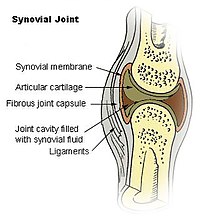Q: My baby is six months old and sleeps for eight hours in the night. I do not know if I am supposed to wake her up and feed her. She is breast fed
A: Consider yourself lucky if your baby has adjusted so quickly to night and day. Breast-feeding should be on demand (by the baby). If she sleeps all night, let her do so. However, if she stops feeding even during the day, and is inactive or lethargic, you need to show her to a paediatrician.
Hygiene products
Q: Are sanitary pads dangerous? Do tampons cause cance
[amazon_link asins=’B005OICT84,B01HODORZ4,B0036Z5TZW,B0029NYQ6A,B00NJNIUDE,B00G8DDBLS,B01MU2JNYC,B00N26WWY6,B00BM90GCA’ template=’ProductCarousel’ store=’finmeacur-20′ marketplace=’US’ link_id=’f040c1e5-3795-11e7-8f5b-d57fd4780176′
A: Sanitary pads are actually more hygienic than cloth as they are disposed of after use. They are not dangerous and do not impact body functions in any way. Tampons, which are inserted into the vagina, are preferred by many women as they are not bulky or messy. They should, however, be changed every four hours. If left for a longer period, bacteria belonging to the streptococci and staphylococci families can cause infection and release toxins. This can cause a fatal illness called toxic shock syndrome. Neither product has been associated with an increased incidence of cancer.
Unruly teen
Q: I have a teenage son who is very disobedient. Recently, he stopped attending classes. Subsequently, he was asked to leave school. He is also very suspicious and abusive towards his mother. I scolded him several times and even beat him on a couple of occasions. He reacted by attacking me with a stick. Is black magic the reason for such behaviour?
A: It is better to look for a rational explanation than blame witchcraft or black magic. Your son is either a recalcitrant teenager or may be suffering from a psychiatric ailment. He needs professional evaluation, medication and counselling. With consolidated multi-faceted modern-day therapy, both problems can be tackled. He will probably do very well and be able to re-integrate into society.
Irregular periods
Q: I am 21 years old and have irregular periods, which occur once in 40-50 days. Is that dangerous? Can I make my periods regular?
….[amazon_link asins=’B001E101L2,B00IMJYQZG,B014PHMW04,B00728PJ18,B00S7JD5IA,B01MQH0EIJ,B01ITF5Q4C,B000I4ALB6,B005HK5MNI’ template=’ProductCarousel’ store=’finmeacur-20′ marketplace=’US’ link_id=’48eea236-3796-11e7-ae64-4d0ab1a3fcb4′]
A: Cycles are very individual, and can occur once in 24-60 days and you can still be normal. Keep a diary and track your periods. Check if they occur “regularly” at some odd interval like 33 or 52 days. They may seem irregular when in fact they are not. In that case, you need not worry. Ovulation occurs 14 days before the next period, so it is the first part of your cycle that is prolonged. You may be functioning normally but with a longer cycle. After maintaining records for six months, if you find that you still have irregular periods, consult a gynecologist. An ultrasound scan and a few blood tests to evaluate hormone levels are usually all that is necessary. If any abnormality is found, it can be usually be corrected with medication while you are still young.
Broken bones
Q: My son has osteogenesis imperfecta and his bones break frequently. He has had several surgeries, and his legs are now deformed. He has also not gained enough height. I have decided that natural therapy is best as it does not involve intervention, and have put him on calcium supplements alone. Will this work?
A: Osteogenesis imperfecta is due to a genetic defect as a result of which bone collagen — or the building blocks of which bones are made — are ill formed and inadequate. The condition is not due to a deficiency of calcium. To manage it well, the individual deformities should be minimised and functional ability maximised at home and in the community.
Physiotherapy and functional aids like braces are useful to maintain mobility. Fractures and deformities, unfortunately, will occur and require surgical correction. Medications called biphosphates and calcitonin can be used to strengthen the bones. You need to follow the advice of your orthopaedic surgeon.
Adolescent exercise
Q: I am 15 and my height is 5 feet 4 inches. I exercise regularly in the gym and have developed arm muscles and a six-pack abdomen. But I am afraid I will remain short.
A: Your lifestyle is commendable, considering the epidemic of adolescent obesity. Even 10 years ago, children and teenagers were not encouraged to do weight training. That’s because the ends of their growing bones are not yet fused, and any injury might prove costly. And gyms were not geared for teenagers. Supervision or training by qualified personnel was rare and there were no light weights. Now, however, the scenario is changing. Teenagers are advised to combine running, jogging, swimming and other forms of aerobic exercise with mild, supervised strength training. They should, however, avoid competitive weight lifting, power lifting, body building and maximal lifts until they reach physical and skeletal maturity (that is, at around 21 years). They can follow a general strengthening programme which should address all major muscle groups and exercise through the complete range of motion.
Source: The Telegraph (Kolkata, India)
![Reblog this post [with Zemanta]](https://i0.wp.com/img.zemanta.com/reblog_e.png?w=580)










